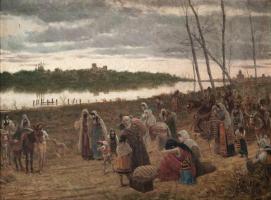ROCOCÓ architecture: characteristics and examples
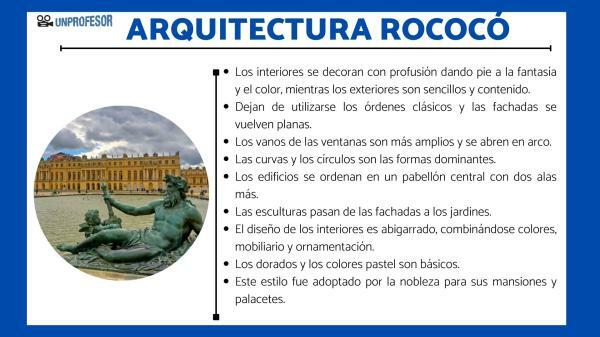
In the last phase of the Baroque, and during the reign of Louis XV in France, a much more decorative artistic style emerged, the Rococo. A name that comes from the fusion of two words, "rocalla" and "coquillage", two terms that make reference to the rocks and shells with which it was profusely decorated both interiors and exteriors.
As far as architecture is concerned, Rococo was the first artistic movement devoted to interior design, being one of its priorities. In this lesson from unPROFESOR.com we tell you what are the Characteristics of Rococo architecture and examples.
Index
- Characteristics of Rococo architecture
- Examples of Rococo architecture
- Palace of Versailles, the great example of the Rococo style in architecture
Characteristics of Rococo architecture.
The Rococodeveloped approximately between 1715 and 1760. It was a style that generated a great division of opinions. The revolutionaries detested it for considering it a decadent style and the result of the degeneration that the French court had reached. It spread from France to Germany. In other countries such as England, the Netherlands, Spain and Italy it did not catch on.
We begin by reviewing the main characteristics of rococo architecture so that, in this way, you know better what this art is like. They are the following:
- Rococo architecture offers a remarkable difference between how they are designed interiors and exteriors:The interiors are decorated profusely, in an exaggerated way, giving rise to fantasy and color, while the exteriors are simple and restrained in terms of decoration.
- Another characteristic of Rococo architecture is that stop using the classic commands and the facades become flat, resorting to the moldings as an element to surround openings and separate the floors.
- The window openings are wider in that search to enhance the relationship between interior and exterior thanks to the windows. In addition, they open in an arc.
- The curves and circles are the dominant forms.
- The buildings are arranged in a central pavilion with two more wings, always lower and curved, and surrounded by a garden area or a park.
- The sculptures they go from the facades to the gardens, becoming their typical ornamentation.
- Interior design is motley, combining colors, furniture and ornamentation to create a unity of style. A complete aesthetic experience with murals, tapestries, mirrors, china, plasterwork, porcelain and the most refined furniture.
- The gold and pastel colors They are basic in interior decoration.
- In addition to preciousness, the architects also sought functionality and comfort in all rooms.
- This style was adopted by the nobility for their mansions and palaces as a way to demonstrate your social status and surprise your visitors with spectacular, elaborate and precious interiors.
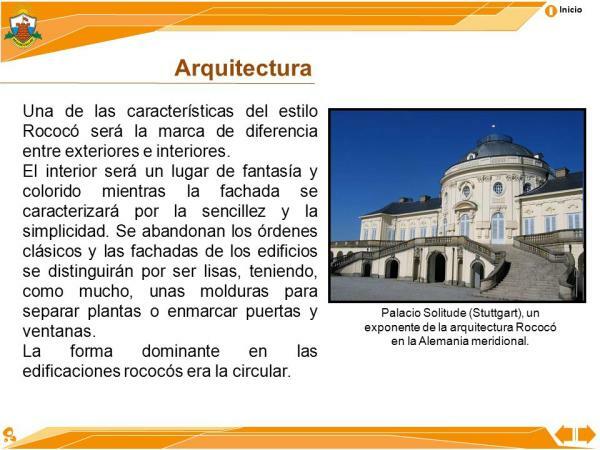
Examples of Rococo architecture.
Among the main examples of Rococo architecture The following buildings stand out:
- The oval room of the Hotel de Soubise in Paris, work of Germain Boffrand, French architect, decorator and engineer, being the greatest exponent of Rococo.
- The Monsieur le Prince's salon at the Chantilly Palace, work of the architect Jean Aubert.
- Another example of Rococo buildings is the amalienburg. A hunting lodge built between 1734 and 1739 for Charles VII and his wife, Maria Amelia of Austria, by François de Cuvilliés.
The palace was designed as a summer residence and considered as one of the great jewels of Rococo and is located in the park of the Nymphenburg Palace (Munich).
Cuvilliés designed the decoration, with stucco work by Johann Baptist Zimmermann, reliefs by Johann Joachim Dietrich, and paintings by Joseph Pasqualin Moretti.
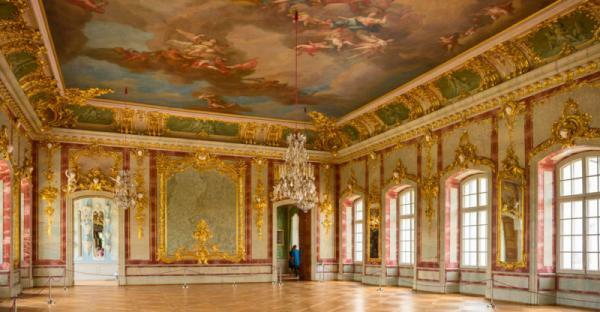
Palace of Versailles, the great example of the Rococo style in architecture.
Louis XIV sought to capture all the splendor of his kingdom in a building that would be spectacular and would become the ideal setting to glorify his figure before the court, the people and foreign ambassadors.
The expansion work was the work of the architect Mansart. The building reached a size of more than 600 meters and two splendid monumental facades: one towards the gardens and the other towards the city.
But it is inside where we find the most outstanding examples of Rococo art. The architect LeBrun was commissioned to decorate the interior. A decoration that contributed to bring luxury and splendor to the interiors thanks to the furniture, the porcelain and the excess of ornamentation.
The royal chapel and the Hall of Mirrors are the highlights of the palace. A room of 75 meters in which mirrors are arranged that manage to create the illusion of making the room larger room, surprising by the enormous luxury that surrounds it: sculptures, glassware, marble, gold, murals, and so on. The mirrors also manage to reflect the light of the garden and be able to admire it from the inside.
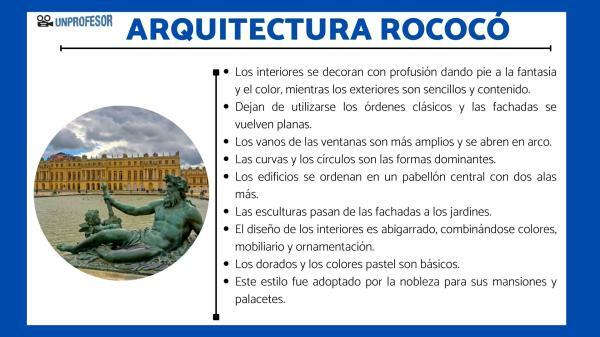
If you want to read more articles similar to Rococo architecture: characteristics and examples, we recommend that you enter our category of History.
Bibliography
- AYALA, Tiffany, et al. Rococo art. Rococo Art, 2012, Vol. 1 p. 1-43.
- FRANCASTEL, Pierre. Art, architecture and aesthetics in the eighteenth century. AKAL editions, 1987.
- MALDONADO, Enrique Herrera. Baroque and Rococo architecture. In Encyclopedia of Castilla-La Mancha. 1999. p. 106-117.
- MARTINEZ, Rosario Camacho. Baroque and Rococo: architecture and urbanism. In History of art. Alliance, 1996. p. 162-215.

